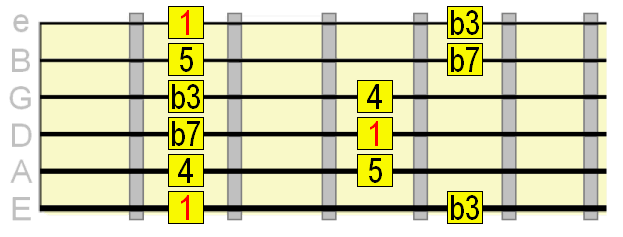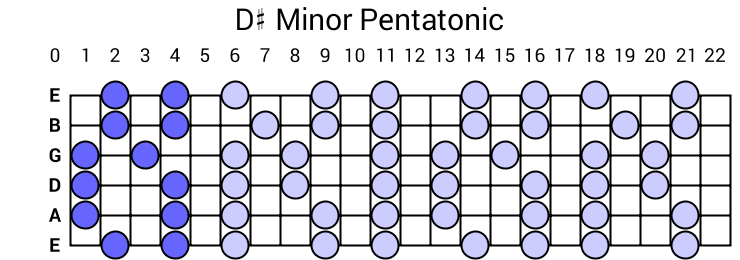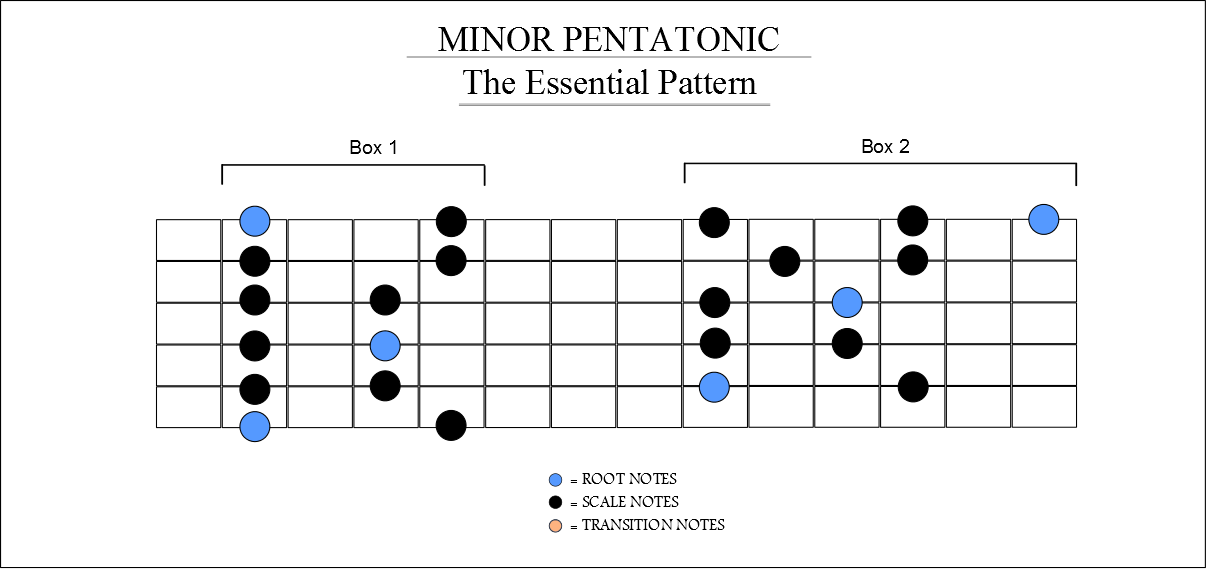Into The Minor Pentatonic Mode
The Minor Pentatonic Mode
This is the most common scale in blues, pop and rock music.It is easy to learn and is essential for learning to improvise in a blues style. ‘Penta' means five and ‘tonic' means note, so ‘ Minor Pentatonic Scale' really just means ‘Minor Five-Note Scale'. The reason we learn scales is that they are groups of notes that sound really good together that we can use to make up solos (as in lead guitar) and melodies. We'll get to that later on. They are also great for developing your technique for playing single notes, so they are an important part of your development as a guitar player.


